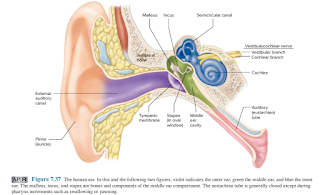Perforated Eardrum
Introduction
The tympanic membrane (eardrum) is a thin layer of tissue between the ear canal and middle ear
- When air molecules push against the membrane, they cause it to vibrate at the same frequency as the sound wave.
- The vibrations are then transferred to the tiny bones in the middle ear.
Symptoms
Traumatic perforation of the ear drum causes sudden severe pain (that may subside quickly) sometimes followed by
- Bleeding from the ear
- Hearing loss
- Tinnitus (Ringing in the ear)
- Vertigo (Spinning sensation)
NOTE: Perforation is generally evident on otoscopy. Small perforations may require otomicroscopy for identification.
Management
Most perforated eardrums (especially those less than 25% of the total drum surface area) heal without treatment within a few weeks.
- May take over-the-counter painkillers to relieve pain if needed.
- Persistent perforations typically require operative repair (e.g. tympanoplasty).
In the meantime, protect it by
- Keep the ear dry - do not go swimming and be extra careful when showering or washing hair.
- Refraining from cleaning the ears.
- Avoiding blowing your nose.
NOTE: Any patients with severe hearing loss, vomiting, dizziness or facial weakness should see an ENT specialist.
Prevention
During takeoffs and landings of flight, keep ears clear with pressure-equalizing earplugs, yawning or chewing gum.
Never attempt to remove earwax with items such as cotton swab, paper clip or hairpin.
Avoid activities that expose the ears to explosions. If unavoidable, wear protective earplugs or earmuffs.
Treat middle ear infections promptly.

Comments
Post a Comment